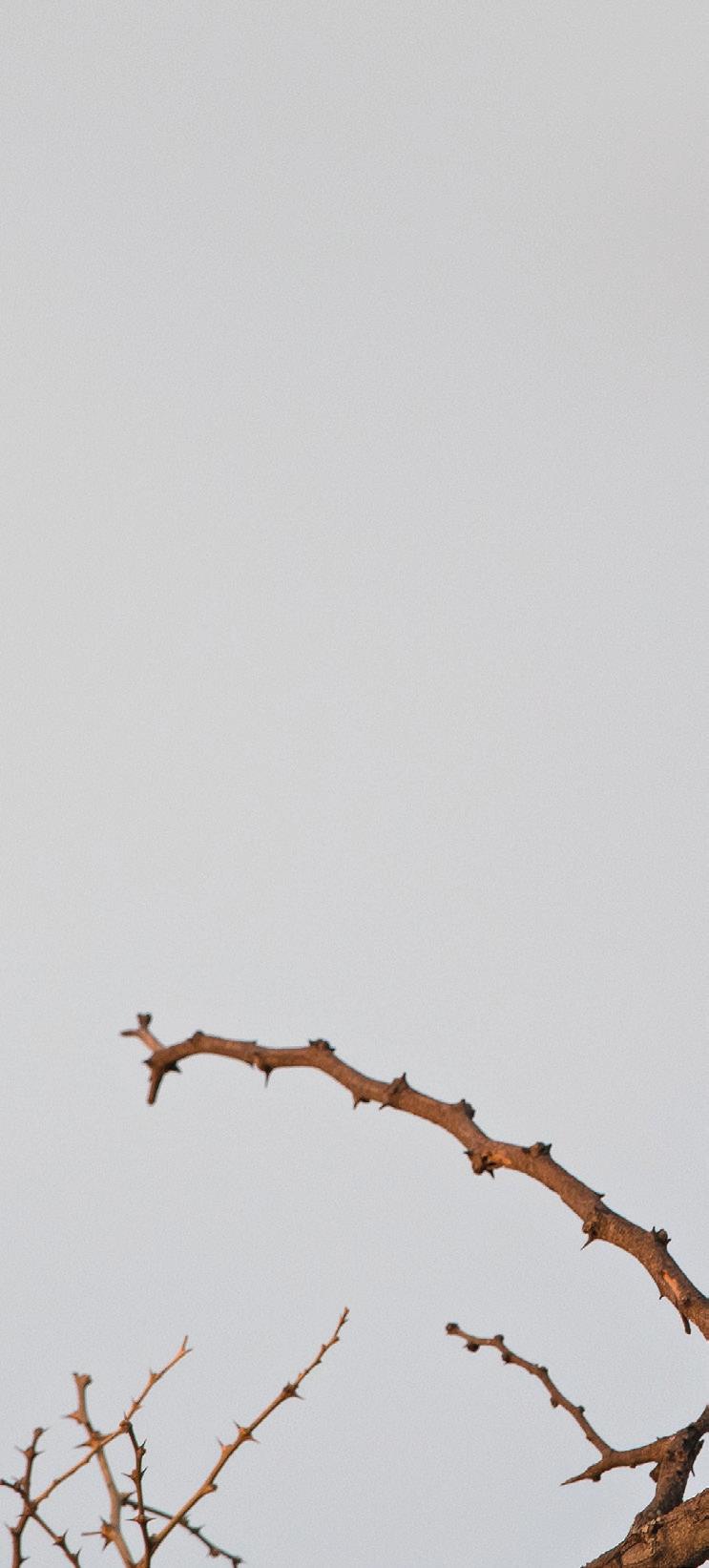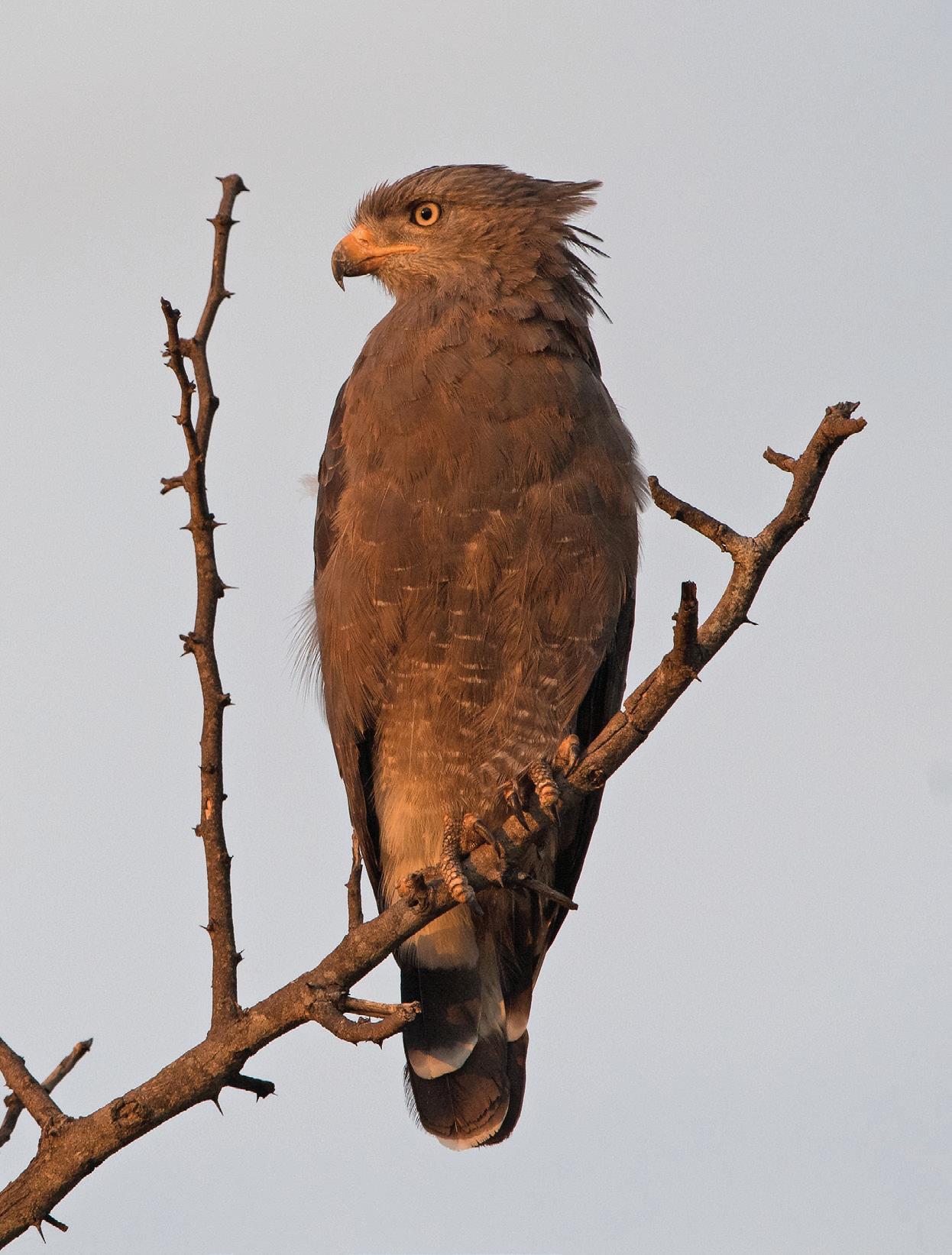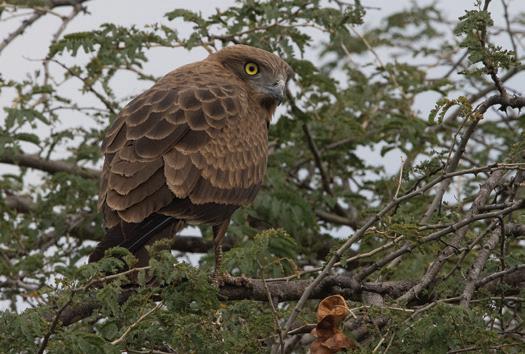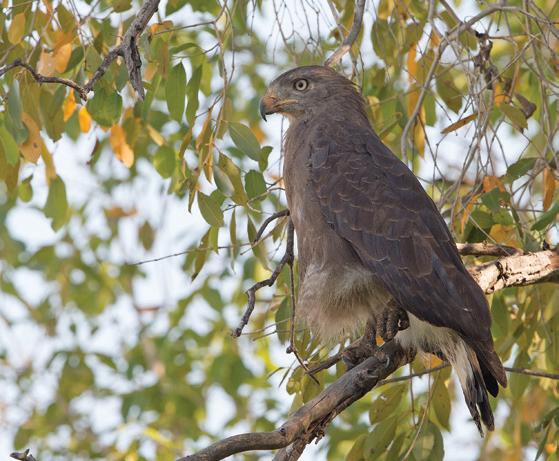
5 minute read
BIRDING WITH POMPIE Snake Eagles of Namibia
of Namibia Snake Eagles
Text and Photographs Pompie Burger
I don’t like snakes, and I am scared of snakes. The fact that I know Dr Christo Buys, the snake whisperer of Namibia, does not make any difference to either my fear or dislike. One of the main reasons for being scared is the fact that I had to treat a few people that had been bitten by a snake, and invariably they were bitten while in bed (where I spend a lot of time) or at night walking around minding their own business. Another major problem is that I do not know the difference between venomous and harmless snakes. What I do know is that they all have snaky eyes.

Western Banded Snake Eagle in Mubala Conservancy
Western Banded Snake Eagle with a black mamba



Brown Snake Eagle in Etosha National Park


Brown Snake Eagle
Ilike Snake Eagles. They do not have snaky eyes but large beautiful, almost owl-like yellow eyes, and more importantly, they kill snakes. Although Namibia has only three different Snake Eagles, they are all on my wish list whenever we travel. It looks like God has released the three Snake Eagles from north to south: first all three, further south only two and eventually just the Black-chested Snake Eagle, which is indeed the most widespread and most common Snake Eagle in southern Africa. The Western Banded Snake Eagle is a rather special addition to Namibia’s selection and occurs only in the Zambezi Region.
Western Banded Snake Eagle, only found in Namibia's northeastern Zambezi Region.


As with most raptors, there are a few challenges facing the birdwatcher. These eagles are few and far between, the juvenile, immature factor is as real as in all the other raptors, and most of them are either quiet or have a rather nonspecific call (good for me, I cannot identify birds by their call, anyway). The main important ID factors are indeed their big heads, big yellow eyes (compared to their body size) and that all the other raptors eat snakes. Their scientific name Circaetus means Harrier, and often they are called Harrier Eagles, which explains their hunting method of hovering and diving down ambushing its prey.
Snake Eagles are not immune to snake venom and can be immobilised or killed by venomous snakes, and blinded by a spitting Cobra. Their tarsi (feet and legs) are thickly scaled which serves as a protection against snake bite. After catching their prey, they will carry it with their tarsi to a perch to devour.
As with many raptors, Snake Eagles are no exception as far as identification is concerned, although in this case it is more difficult to separate them from other raptors and not from each other. For instance, the Black-chested Snake Eagle’s lookalike is the Martial Eagle. The difference being that the Snake Eagle is smaller, has big yellow eyes and a large head (compared to its body size), and its underparts are pure white in contrast to the Martial Eagle’s dark brown spots. Probably the biggest difference is in flight, where the Snake Eagle is almost pure white with the black neck and head sticking out, while the Martial Eagle has black primaries and secondaries with fine black and white barring.
The Brown Snake Eagle is a brown raptor - need I say more? You can go through your list of brown raptors and if you are still uncertain, the big head and large yellow eyes might be the solution to your problem. Being the largest of the snake eagles does not help much to differentiate it from
60 WWW.TRAVELNEWSNAMIBIA.COM other large brown raptors, neither does the fact that they are silent (they very seldom call). They do tend to spend a lot of time perched on top of open trees, if that will help your attempt at identification.
The Western Banded Snake Eagle is for various reasons my favourite. One of them is the fact that they occur in Namibia and not in South Africa and that they occur in my favourite hunting ground, the Zambezi Region. They have a rather unique habitat of woodland, riverine forest and creeper-laden trees, which explains why their distribution is so limited. They are much more secretive than the other two, more vocal, often spotted only after hearing their loud staccato koah kok-hoaaa call (I could never work this out). Once spotted, this eagle seems to be quite approachable, and if disturbed it will not fly too far off and wait for you to take some more pictures. One of the ID problems is that it is not a brown but a grey raptor, which is the next large group of unidentifiable raptors. Apparently its call and the black tail with a broad white band visible from the top and below (unfortunately only seen in flight) are important identification signs. The big head and yellow eyes should also help to do the final diagnosis.
The best time to look for them is early morning and late afternoon. At midday they will often soar high above. A waterhole is also a good option, that is if you have the patience to sit there for hours, because they often drink water and also like to take a quick wash.
If you love snakes and are not scared of them, there is a possibility that you might get irritated seeing one of your favourites getting carried away, especially by a Snake Eagle and not by your presence and tender love and care. The Bible is quite adamant about snakes in Luke 10:19 - “Behold, I have given you authority to tread on all scorpions and serpents, and over all the power of your enemy, and nothing will injure you”. TNN

Brown Snake Eagle in Nkasa Rupara National Park










